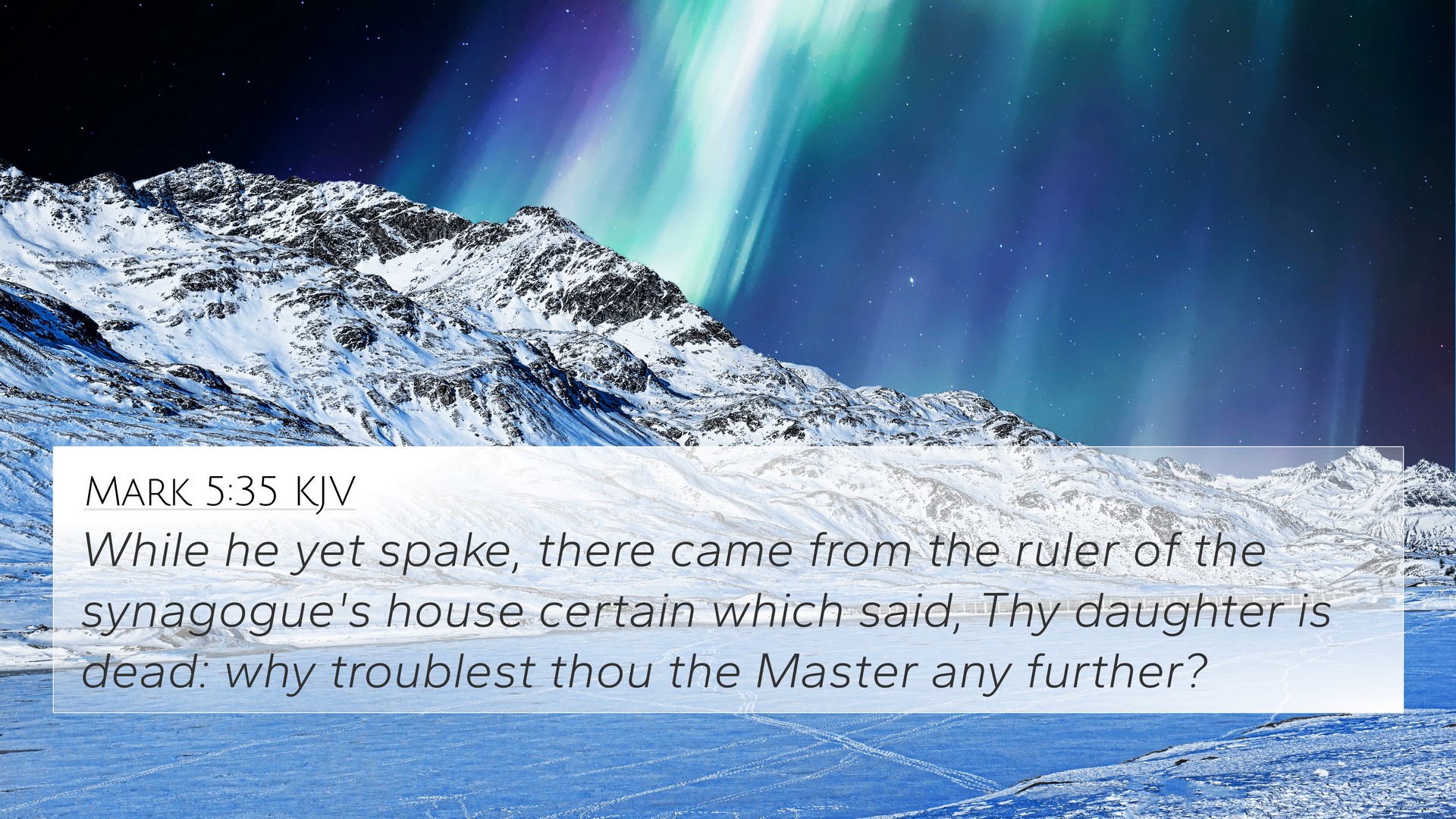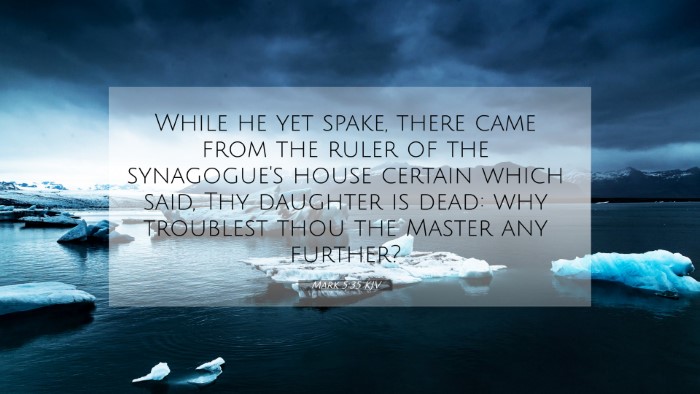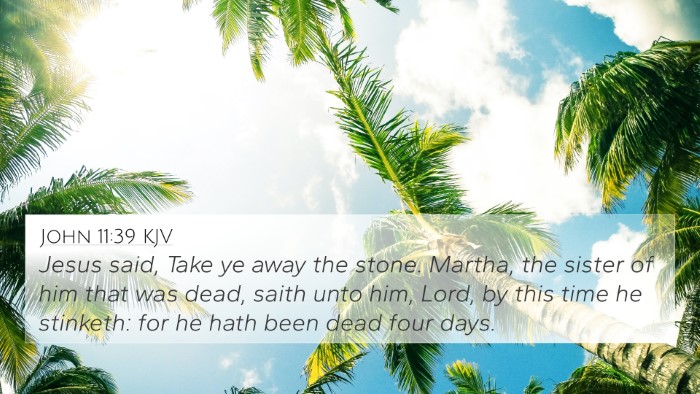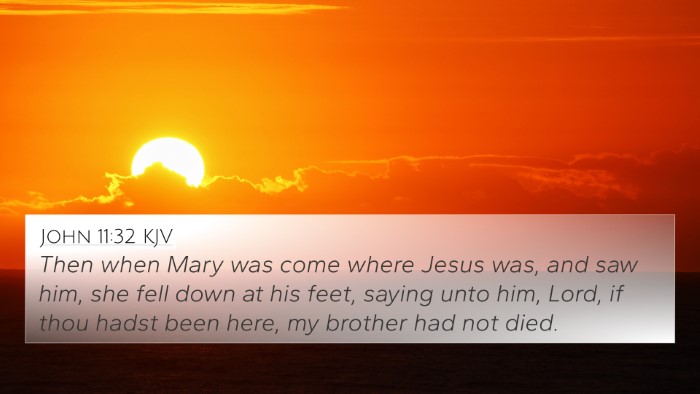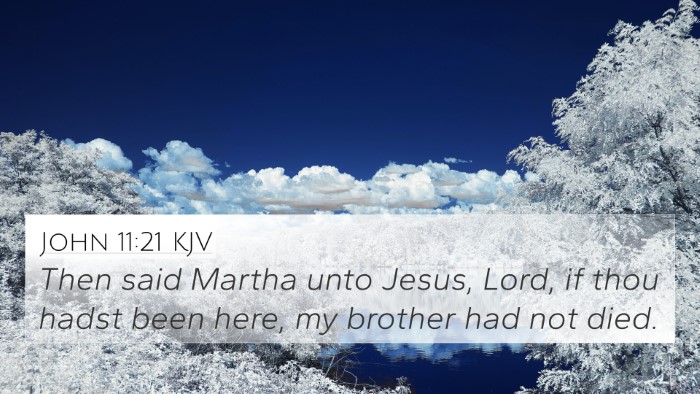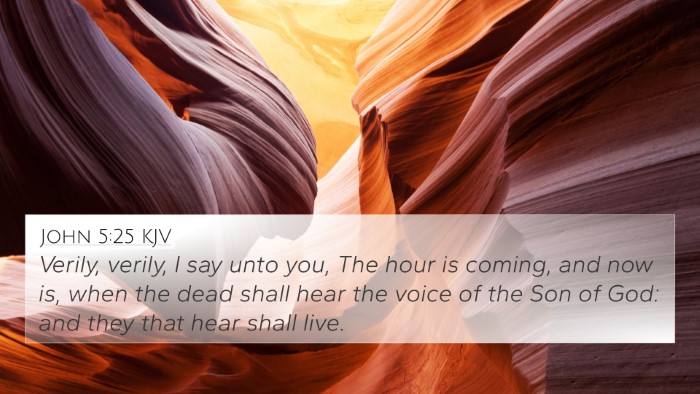Understanding Mark 5:35
Mark 5:35 states: "While he yet spake, there came from the ruler of the synagogue's house certain which said, Thy daughter is dead: why troublest thou the Master any further?"
This verse narrates a pivotal moment in the New Testament, filled with profound implications and emotional weight concerning faith, despair, and divine intervention.
Context and Significance
Before diving into the meaning, it is important to note the context of this verse. Jesus was approached by Jairus, a ruler of the synagogue, who begged Him to heal his sick daughter. As Jesus was on His way, word arrived that the girl had died. This moment highlights the stark contrast between human distress and the power that Christ wields over life and death.
Insights from Public Domain Commentaries
Matthew Henry Commentary
Matthew Henry emphasizes the despair expressed in this verse. The news of the girl's death is a moment of deep sorrow for Jairus, yet it presents a crucial turning point. Henry interprets this as a demonstration of the faith challenge faced by believers. The words, "why troublest thou the Master any further?" reflect the discouragement stemming from apparent hopelessness.
Albert Barnes Commentary
Albert Barnes offers a perspective on the implication of the messenger's words. He highlights the societal and religious norms of the time, where a deceased person was deemed beyond the help of a healer. Barnes argues that the news served to test the faith of Jairus and others present. Jesus challenges such despair, demonstrating that faith can transcend the finality of death.
Adam Clarke Commentary
Adam Clarke provides a theological exploration of this moment, noting that it not only serves as a historical narrative but also reflects a larger theme in Scripture—the idea that faith can conquer death. Clarke suggests that Christ's forthcoming miracle, not yet revealed, serves as a foreshadowing of the resurrection power He holds.
Thematic Connections and Cross-References
Mark 5:35 resonates with numerous themes throughout the Bible, weaving together messages of hope, faith, and divine authority. Here are some notable cross-references:
- John 11:11-14 - Jesus speaks of Lazarus’s death, indicating that death is not the end for those who believe.
- Luke 8:49-50 - A parallel account of Jairus’s story, illustrating Jesus's response to fear and His affirmation of faith.
- Matthew 9:18-26 - This passage mirrors the circumstances of Jairus, further illustrating Jesus’s authority over life and death.
- Hebrews 11:1 - The assurance of things hoped for; highlights the essence of faith amidst despair, relevant to Jairus’s situation.
- Romans 4:18 - Speaks to the hope against hope, akin to Jairus’s faith in the face of grim news.
- Psalm 30:5 - "Weeping may endure for a night, but joy cometh in the morning." This offers a powerful reminder of hope beyond mourning.
- Isaiah 41:10 - God assures His people—"Fear not; I am with you," which parallels the message of reassurance that Jesus offers Jairus.
Inter-Biblical Dialogue
The verse serves as a point of profound dialogue between the Old and New Testaments. The themes of faith, healing, and resurrection echo throughout Scripture:
- Connections between the prophetic promises of healing in Isaiah 53:5 and the fulfillment found in Christ's ministry.
- Linking despair in the face of mortal circumstances with the resurrection power seen in 1 Corinthians 15:55-57.
- Comparative reflections on the Old Testament faith of figures like Job, who faced death, trusting in God’s ultimate plan.
Conclusion
Mark 5:35 serves not only as a narrative of despair but as an invitation to deeper faith. The connections it offers to other biblical texts enrich our understanding of God's promises and the nature of belief. In a world full of trials and tribulations, this verse reminds us that faith must rise above our circumstances. By cross-referencing these scriptures, we discover a strong thread of hope woven throughout the fabric of the Bible, encouraging us to trust in the divine, even when faced with the greatest challenges.
